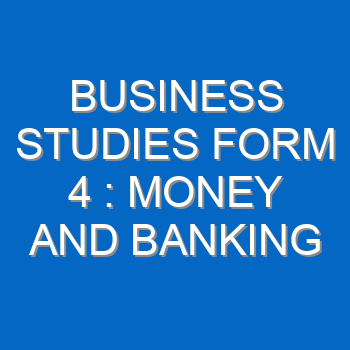Share this:
Specific Objectives
By the end of the topic the learner should be able to:
- solve linear equations in one unknown
- solve simultaneous linear equations by substitution and elimination
- Linear equations in one and two unknown.
Content
- Linear equations in one unknown
- Simultaneous linear equations
- Linear equations in one and two unknowns from given real life situations
Introduction
Linear equations are straight line equations involving one or two unknowns. In this chapter, we will deal with the formation and solving of such equations consider the following cases.
Example
Solve for the unknowns in each of the following equations
3x + 4 = 10
– 2 = 4
= 5/4
Solution
3x + 4 =10
3x + 4 – 4 = 10 – 4 (to make x the subject subtract 4 on both sides)
3x = 6
X = 2
– 2 = 4
– 2 + 2 = 4 + 2 (to make x the subject add 2 to both sides)
= 6
X = 18
=
3 x ( = x 3
P+ 5 =
4(p + 5) =
4p + 20 = 15
4p = -5
P =
= – 1 ¼
Solving an equation with fractions or decimals, there is an option of clearing the fractions or decimals in order to create a simpler equation involving whole numbers.
- To clear fractions, multiply both sides of the equation (distributing to all terms) by the LCD of all the fractions.
- To clear decimals, multiply both sides of the equation (distributing to all terms) by the lowest power of 10 that will make all decimals whole numbers.
Steps for Solving a Linear Equation in One Variable:
- Simplify both sides of the equation.
- Use the addition or subtraction properties of equality to collect the variable terms on one side of the equation and the constant terms on the other.
- Use the multiplication or division properties of equality to make the coefficient of the variable term equal to 1.
- Check your answer by substituting your solution into the original equation.
Note:
All other linear equations which have only one solution are called conditional.
Example
Solve for the unknown in each in of the following equations
- – = 1/8
- =
Solution
- – = 1/8 x 24 ( multiply both sides by the L.C.M of 2 ,3 and 8)
−8 (x – 2) = 3
− 8x – 16 =3
4x = -25
- =(multiply both sides by the L.C.M of 2 5 and 4)
30y- 4 (14y -3) = 5 (y – 4)
-26 + 12 = 5y -20
31 y = 32
Problems leading to Linear equations
Equations are very useful in solving problems. The basic technique is to determine what quantity it is that we are trying to find and make that the unknown. We then translate the problem into an equation and solve it. You should always try to minimize the number of unknowns. For example, if we are told that a piece of rope 8 metres long is cut in two and one piece is x metres, then we can write the remaining piece as (8 – x) metres, rather than introducing a second unknown.
Word problems
Equations arise in everyday life. For example Mary bought a number of oranges from Anita’s kiosk. She then went to Marks kiosk and bought the same number of oranges. Mark them gave her three more oranges. The oranges from the two kiosks were wrapped in different paper bags. On reaching her house, she found that a quarter of the first Lot oranges and a fifth of the second were bad. If in total six oranges were bad, find how many oranges she bought from Anita’s kiosk.
Solution
Let the number of oranges bought at Anita’s kiosk be x.
Then, the number of oranges obtained from Marks kiosk will be x +3.
Number of Bad oranges from Marks kiosk was.
Total number of Bad oranges is equal to =
Thus, = +
Multiply each term of the equation by 20 (L.C.M of 4 and 5) to get rid of the denominator.
=20 x
5x + 4 (x + 3) = 120
5x + 4x + 12 =120 (Removing brackets)
Subtracting 12 from both sides.
9x =108
X = 12
Thus, the number of oranges bought from Anita’s kiosk was 12.
Note:
If any operation is performed on one side of an equation,it must also be performed on the other side.
Example
Solve for x in the equation:
Solution
Eliminate the fractions by multiplying each term by 6 (L.C.M, of 2 and 3 ).
6x (
3(x + 3) – 2 (x – 4) = 24
(note the change in sigh when the bracket are removed)
Linear Equations in Two Unknowns
Many problems involve finding values of two or more unknowns. These are often linked via a number of linear equations. For example, if I tell you that the sum of two numbers is 89 and their difference is 33, we can let the larger number be x and the smaller one y and write the given information as a pair of equations:
x + y = 89 (1)
x – Y = 33. (2)
These are called simultaneous equations since we seek values of x and y that makes both equations true simultaneously. In this case, if we add the equations we obtain 2x = 122, so x = 61. We can then substitute this value back into either equation, say the first, then 61 + y = 89 giving y = 28.
Example
The cost of two skirts and three blouses is sh 600.If the cost of one skirt and two blouses of the same quality sh 350,find the cost of each item.
Solution
Let the cost of one skirt be x shillings and that of one blouse be y shillings. The cost of two skirts and three blouses is 2x + 3y shillings.
The cost of one skirt and two blouses is x + 2y shillings.
So, 2x + 3y = 600……………….. (I)
X + 2y = 350 ……………………….. (II)
Multiplying equation (II) by 2 to get equation (III).
2x + 4y = 700 ……………… (III).
2x + 3y = 600…………………(I)
Subtracting equation (I) from (II), y = 100.
From equation (II),
X + 2y = 350 but y = 100
X + 200 = 350
X = 150
Thus the cost of one skirt is 150 shillings and that of a blouse is 100 shillings.
In solving the problem above, we reduced the equations from two unknowns to a single unknown in y by eliminating. This is the elimination method of solving simultaneous equations.
Examples
Solutions
Adding I to II
2a = 12
Subtracting II from I
2b = 2
.
Find the value of b
To eliminate (I) by 5 and (II) by 3 to get (III) and (IV) respectively and subtracting (IV) from (III);
2y = 6
Therefore y = 3
Substituting y = 3 in (I);
3x + 12 = 18
Therefore x =2
Note that the L.C.M of 3 and 5 is 15.
To eliminate y;
Multiplying (I) by 3, (II) by 2 to get (V) and (VI) and Subtracting (V) from (VI);
Subtracting x = 2 in (ii);
10 + 6y = 28
6y = 18
Therefore y = 3.
Note;
- It is advisable to study the equation and decide which variable is easier to eliminate.
- It is necessary to check your solution by substituting into the original equations.
Solution by substitution
Taking equation (II) alone;
Subtracting 2y from both sides;
Substituting this value of x in equation;
2(350 – 2y) + 3y = 600
700 – 4y + 3y = 600
Y = 100
Substituting this value of y in equation;
This method of solving simultaneous equations is called the substitution method
End of topic
Did you understand everything? If not ask a teacher, friends or anybody and make sure you understand before going to sleep! |
Past KCSE Questions on the topic
- A cloth dealer sold 3 shirts and 2 trousers for Kshs 840 and 4 shirts and 5 trousers for Kshs 1680 find the cost of 1 shirt and the cost of 1 trouser
- Solve the simultaneous equations
2x – y = 3
x2 – xy = -4
- The cost of 5 skirts and blouses is Kshs 1750. Mueni bought three of the skirts and one of the blouses for Kshs 850. Find the cost of each item.
- Akinyi bought three cups and four spoons for Kshs 324. Wanjiru bought five cups and Fatuma bought two spoons of the same type as those bought by Akinyi, Wanjiku paid Kshs 228 more than Fatuma. Find the price of each cup and each spoon.
- Mary has 21 coins whose total value is Kshs. 72. There are twice as many five shillings coins as there are ten shilling coins. The rest one shillings coins. Find the number of ten shillings coins that Mary has. ( 4 mks)
- The mass of 6 similar art books and 4 similar biology books is 7.2 kg. The mass of 2 such art books and 3 such biology books is 3.4 kg. Find the mass of one art book and the mass of one biology book
- Karani bought 4 pencils and 6 biros – pens for Kshs 66 and Tachora bought 2 pencils and 5 biro pens for Kshs 51.
(a) Find the price of each item
(b) Musoma spent Kshs. 228 to buy the same type of pencils and biro – pens if the number of biro pens he bought were 4 more than the number of pencils, find the number of pencils bought.
- Solve the simultaneous equations below
2x – 3y = 5
-x + 2y = -3
- The length of a room is 4 metres longer than its width. Find the length of the room if its area is 32m2
- Hadija and Kagendo bought the same types of pens and exercise books from the same types of pens and exercise books from the same shop. Hadija bought 2 pens and 3 exercise books for Kshs 78. Kagendo bought 3 pens and 4 exercise books for Kshs 108.
Calculate the cost of each item
- In fourteen years time, a mother will be twice as old as her son. Four years ago, the sum of their ages was 30 years. Find how old the mother was, when the son was born.
- Three years ago Juma was three times as old as Ali. In two years time the sum of their ages will be 62. Determine their ages.
- Two pairs of trousers and three shirts costs a total of Kshs 390. Five such pairs of trousers and two shirts cost a total of Kshs 810. Find the price of a pair of trousers and a shirt.
- A shopkeeper sells two- types of pangas type x and type y. Twelve x pangas and five type y pangas cost Kshs 1260, while nine type x pangas and fifteen type y pangas cost 1620. Mugala bought eighteen type y pangas. How much did he pay for them?





